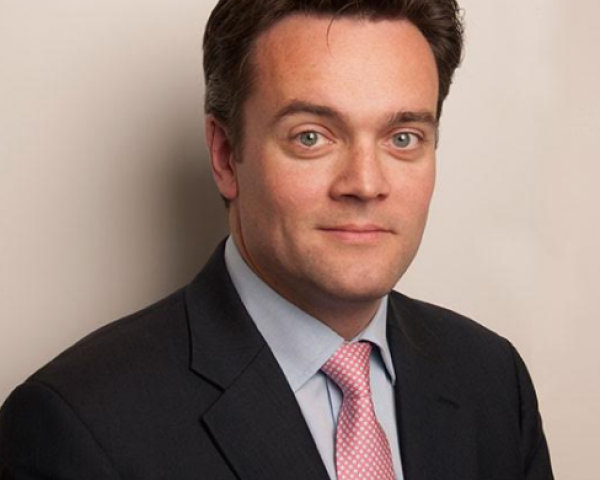Opportunities in Wearables, FitBits
Wearables encourage insureds to become accountable, producing healthier clients--but also concerns on privacy and reliability.

Wearables encourage insureds to become accountable, producing healthier clients--but also concerns on privacy and reliability.

Get Involved
Our authors are what set Insurance Thought Leadership apart.
|
Partner with us
We’d love to talk to you about how we can improve your marketing ROI.
|

Mike de Waal is senior vice president of sales at Majesco.
The winner won't be the first brokerage to go fully online; it'll be the one that doesn't lose its humanity in the face of the digitalization.

Get Involved
Our authors are what set Insurance Thought Leadership apart.
|
Partner with us
We’d love to talk to you about how we can improve your marketing ROI.
|

Santosh Perumbadi joined Simply Business as chief commercial officer in 2017 and is responsible for launching U.S. operations, as well as managing the relationships with insurer partners and suppliers.
"Connected Claims" goes far beyond reorganizing a single department. It can disrupt – and revitalize – an entire company.

Get Involved
Our authors are what set Insurance Thought Leadership apart.
|
Partner with us
We’d love to talk to you about how we can improve your marketing ROI.
|

Mariana Dumont is the head of U.S. operations at Insurance Nexus and is currently focused on helping carriers to transform claims processes to deliver a seamless claims experience.
The #HealthcareCartel wants us to focus on #SurpriseBilling in medical care, but that's just a symptom that distracts from the real problem.

Get Involved
Our authors are what set Insurance Thought Leadership apart.
|
Partner with us
We’d love to talk to you about how we can improve your marketing ROI.
|

David Silverstein is the founder and CEO of Lean Methods Group, a global management consulting firm specializing in strategy, innovation and operational excellence. Lean Methods works across many industries and has clients on four continents.
Six long-term gravitational forces are likely to combine to tip the independent London wholesale insurance market into a different orbit.

Get Involved
Our authors are what set Insurance Thought Leadership apart.
|
Partner with us
We’d love to talk to you about how we can improve your marketing ROI.
|

James Twining is CEO at Wren Sterling.

Insurers have caught religion about innovation enough that they're trying to develop an innovation culture. That's the good news. The bad news is that many are going about it wrong. They focus on the ephemeral aspects of culture and hope that innovation will eventually bubble to the service. In fact, as odd as it may sound, the innovation generally needs to come first. Only then will the innovation culture follow.
Let me explain.
Many companies engage in what I think of as "innovation tourism." They go to Silicon Valley and have some meetings, then hope some of the magic will stay with them as they go back home. Maybe they change some things about their office structure, putting in a ping pong table, a fancy espresso machine or something else that's supposed to symbolize innovation and free people to think outside the box. Maybe companies even go so far as to hold some sort of brainstorming session that lets people toss out innovative ideas (though generally without having a clear idea of what to do after all those ideas are collected). Companies often then talk publicly about their innovation efforts, in the hope that everyone will be a little sharper, that processes will move a little faster, that innovations will arise. In any case, the HR department and senior leadership can check a box that shows they've worked to be more innovative.
But inertia is hard to overcome. People will enjoy the brainstorming, and maybe the ping pong table, but they don't have a clear mandate for how to change their behavior, and they haven't entirely bought in—they've never seen the new approach work. For a book project that eventually fell through, I once spent days in a room with some of the best change management people in the world (certainly, some of the highest-paid) and watched them try to specify how to make a culture more innovative. They eventually decided that they couldn't make a culture innovative in a quantifiable way. They could just mandate changes in behavior that, over time, would change the culture.
My experience consulting and writing on innovation suggests even a narrower approach. If you're trying to change the culture of an organization of any size, that's going to be an expensive undertaking and will take years. But success begets success. An innovative product gets people excited and more inclined to try to do even better next time. Seeing the leaders of an innovative project win bonuses and promotions really gets the saliva flowing. Once you have a string of three or four innovation successes, you've gone a long way to changing the culture. Certainly, people will listen when you talk to them about the benefits of innovation and tell them they need to change behaviors.
So, I recommend starting small. Pull together a small team of your sharpest people and get a product into the market that could be a game changer for you. You'll quickly see the benefits of focusing on innovation, while laying the groundwork for a long-term change in culture.
But keep the ping pong table, if you've bought one. I whiled away much of my youth playing ping pong. I recommend it highly.
Have a great week.
Paul Carroll
Editor-in-Chief
Get Involved
Our authors are what set Insurance Thought Leadership apart.
|
Partner with us
We’d love to talk to you about how we can improve your marketing ROI.
|

Paul Carroll is the editor-in-chief of Insurance Thought Leadership.
He is also co-author of A Brief History of a Perfect Future: Inventing the Future We Can Proudly Leave Our Kids by 2050 and Billion Dollar Lessons: What You Can Learn From the Most Inexcusable Business Failures of the Last 25 Years and the author of a best-seller on IBM, published in 1993.
Carroll spent 17 years at the Wall Street Journal as an editor and reporter; he was nominated twice for the Pulitzer Prize. He later was a finalist for a National Magazine Award.
Speaking to the needs of today’s buyer is different than before. The hardest work takes place way earlier than it has in the past.

Get Involved
Our authors are what set Insurance Thought Leadership apart.
|
Partner with us
We’d love to talk to you about how we can improve your marketing ROI.
|

Kevin Trokey is founding partner and coach at Q4intelligence. He is driven to ignite curiosity and to push the industry through the barriers that hold it back. As a student of the insurance industry, he channels his own curiosity by observing and studying the players, the changing regulations, and the business climate that influence us all.
AI and robotic process automation will transform operations, customer service, risk assessment and mitigation and regulatory compliance.

Get Involved
Our authors are what set Insurance Thought Leadership apart.
|
Partner with us
We’d love to talk to you about how we can improve your marketing ROI.
|

Mike de Waal is senior vice president of sales at Majesco.
Mobile apps can pose significant privacy risks for those not made aware of how their personal and private data is used.

Get Involved
Our authors are what set Insurance Thought Leadership apart.
|
Partner with us
We’d love to talk to you about how we can improve your marketing ROI.
|

Judith is the founder and chief new media compliance strategist for CMMR Group-TurnsonPoint, a new media compliance solutions firm located in Petaluma, Calif. CMMR Group-TurnsonPoint specializes in the integration of new media strategies with business strategies to effectively manage risk associated with online compliance (such as the HIPPA Omnibus Rule), global social media private and data protections and contract risk management.
Here’s where blockchain stands today — plus how to see the inherent risks and opportunities of using this exciting technology in insurance.

Forty-six percent of insurers expect to begin using blockchain within the next two years, and 84% say the technology will change the way they do business, says Jim Struntz at Accenture Insurance. It’s clear that blockchain offers a number of exciting possibilities for P&C insurers, but its implementation comes with both risks and challenges. Here’s where blockchain stands today — plus how to understand the inherent risks and opportunities of using this exciting technology in insurance.
How Blockchain Technology Works
Blockchain technology has become a buzzword in dozens of industries, where the technology promises to revolutionize processes across the board. A blockchain is a distributed ledger, with entries stored across the entire network on which it operates, says Michael Mainelli, executive chairman at technology company Z/Yen. Participants in a blockchain can add to the entries in the chain, but cannot delete or modify previous entries. Consensus is reached when everyone’s version of the ledger matches; anomalous entries are instantly recognizable as improper, incomplete or suspect.
Blockchain technology got its start as a driver of digital currencies because it solved a logistical problem: the need for a third party, such as a bank, to guarantee a record of money transfer between two parties. Funds can’t be spent twice because their existence depends on the transactions that record them, says Michael Taggart, president of Cryptonomex. Instead of values being copied, the ledger is continuously updated with a series of transactions, detailing who has what at all times.
See also: Blockchain, Privacy and Regulation
The same model can be applied to other types of sensitive transactions, says Brian Kelley, founder and managing director of Quincy Analytics. For instance, it can allow sensitive data to be shared directly between parties, reducing or eliminating the chance of it being altered or falling into unauthorized hands. Blockchain can also reduce the amount of time required for certain transactions.
The “blockchain’s immutable properties make it a natural partner for insurance, where settlements and reconciliation between multiple parties across the insurance and reinsurance chain can be painful and protracted,” says Helen Beckett at Raconteur. The existence of a single record that no one party can control can end many disputes before they even begin.
How the Blockchain Benefits the Insurance Industry
Insurers can imagine myriad uses for a system that verifies its own accuracy, isn’t siloed in any one company or server, and can automatically perform certain tasks when particular conditions are fulfilled. A blockchain’s opportunities in insurance have only begun to be explored.
Transparency Since blockchain technology is distributed and participatory, it offers new opportunities for transparency in the insurance field. This is something the current industry sorely needs, says Adrian Clarke, founder of the blockchain-based platform Evident Proof. Greater transparency would help customers better understand why and how their claims are handled, for example. This can help reduce the cost of litigation due to misunderstandings, says Clarke, making the claims process more efficient.
Better Security Through BYOID
The blockchain can also streamline customer-insurer transactions by implementing a bring your own ID (BYOID) system, says Abbey Gallegos at Zeguro. Early versions of BYOID already exist, and they’re powered by application program interfaces, or APIs. They’re a common sight: Options to log in with Google or use your Facebook ID make use of APIs, allowing individuals to use one set of login credentials for a wide range of tasks. With the blockchain, identification credentials don’t belong to any one company or server. Instead, users maintain their identification on their own device and choose whether and with whom to share it.
Eliminating stored usernames and passwords speeds transaction time and reduces the number of data points available for exploitation by hackers, while improving assurances that the person logging into their account is who they say they are, says Armin Ebrahimi, founder and CEO at ShoCard. Nationwide has begun testing a blockchain-based proof-of-insurance tool and a BYOID model, says Abizer Rangwala at Accenture. The tool, called RiskBlock, is intended to help insurers, regulators and law enforcement officials verify auto insurance details in real time, without the need for paper insurance cards.
Improved Claims Handling via Smart Contracts
Smart contracts monitor when each party has fulfilled certain obligations or taken specified steps. When the right conditions are met, the smart contract automatically executes actions contingent on those conditions being fulfilled.
“A life insurance smart contract could immediately release funds to a beneficiary upon the death of a policyholder through electronic checking of death certificates,” says James Maudslay at Equinix. Smart contracts monitor themselves without the need for a third party to verify condition fulfillment. This feature allows insurance companies to further digitize routine processes, says Mike de Waal at Global IQx. By eliminating the need for a human to check every routine claim, smart contracts can resolve claims more quickly and free up staff resources for more complex claims.
Smart contracts can also make claim management more effective, says Rajesh Shirsagar at DZone. For instance, a smart contract could automatically record claims and substantiate certain details, releasing payment only when specific conditions are met. Smart contracts could also be used to track the number or type of claims from certain customers and automatically trigger an investigation in pre-set conditions.
New Verticals and Future Preparation The use of tools like BYOID and smart contracts can not only allow for quicker claims handling, but also for expansion into insurance products that were previously too labor-intensive to benefit either customers or insurers.
For instance, several companies have begun using smart contracts to offer flight delay insurance, says Olek Shestakov at Livegenic. Customers put in their flight data and choose a delay time, and if the flight is delayed longer than the time chosen, the smart contract automatically pays the customer. Because the transaction is simple and is based on a single data point, blockchain technology can handle the task without intervention from adjusters (except in unusual circumstances).
Blockchain technology may be particularly well-suited to address other emerging transformations in insurance, says Magda Ramada Sarasola at Willis Towers Watson. For instance, a blockchain’s adaptability enables organizations to respond more nimbly to rapid changes in technology, risk and customer expectations.
See also: Blockchain’s Future in Insurance
Obstacles to Blockchain Technology
As with any new technology, a blockchain present certain growing pains to insurance companies. Security is a continuing concern as blockchain-based companies find their offerings exploited, either by illegal means or by individuals using the code legally to execute tasks that have unintended consequences, says David Roe at CMSWire.
For instance, in 2016 hackers used a flaw in the code in an Ethereum decentralized autonomous organization, or DAO, to siphon out digital currency. $70 million was stolen before the hacker chose to stop, says Samuel Falkon of COTI.
Blockchain technology itself is also going through a growth phase, challenged by its own inefficiency. The more data is included in each addition to the ledger, the more energy and time each transaction takes, slowing down the process, says Alexander Lielacher, founder of Bitcoin Africa. These inefficiencies also limit the scalability of blockchain projects.
Blockchain systems will need to strip out these inefficiencies to provide on their promise of faster transactions for insurance companies and customers. Energy consumption in blockchain technology is a rising concern, as well. In 2018, Bitcoin consumed about 0.2% of the world’s total energy consumption — more than that used by the entire nation of Bulgaria in a year, says Tam Hunt at Green Tech Media. If these trends continue, blockchain applications could consume more energy than every other human endeavor combined by 2020, says Eric Holthaus at Grist.
Finally, insurance companies face the same risk with blockchain as with other new technologies: In the rush to stay relevant, they may end up embracing a tool that isn’t effective for their approach to business, says Neeraj Sabharwal at Forbes. While blockchain may promise a way forward for insurance companies, its implementation in the face of each company’s unique challenges will determine its effectiveness for the insurer and their customers.
Get Involved
Our authors are what set Insurance Thought Leadership apart.
|
Partner with us
We’d love to talk to you about how we can improve your marketing ROI.
|

Tom Hammond is the chief strategy officer at Confie. He was previously the president of U.S. operations at Bolt Solutions.